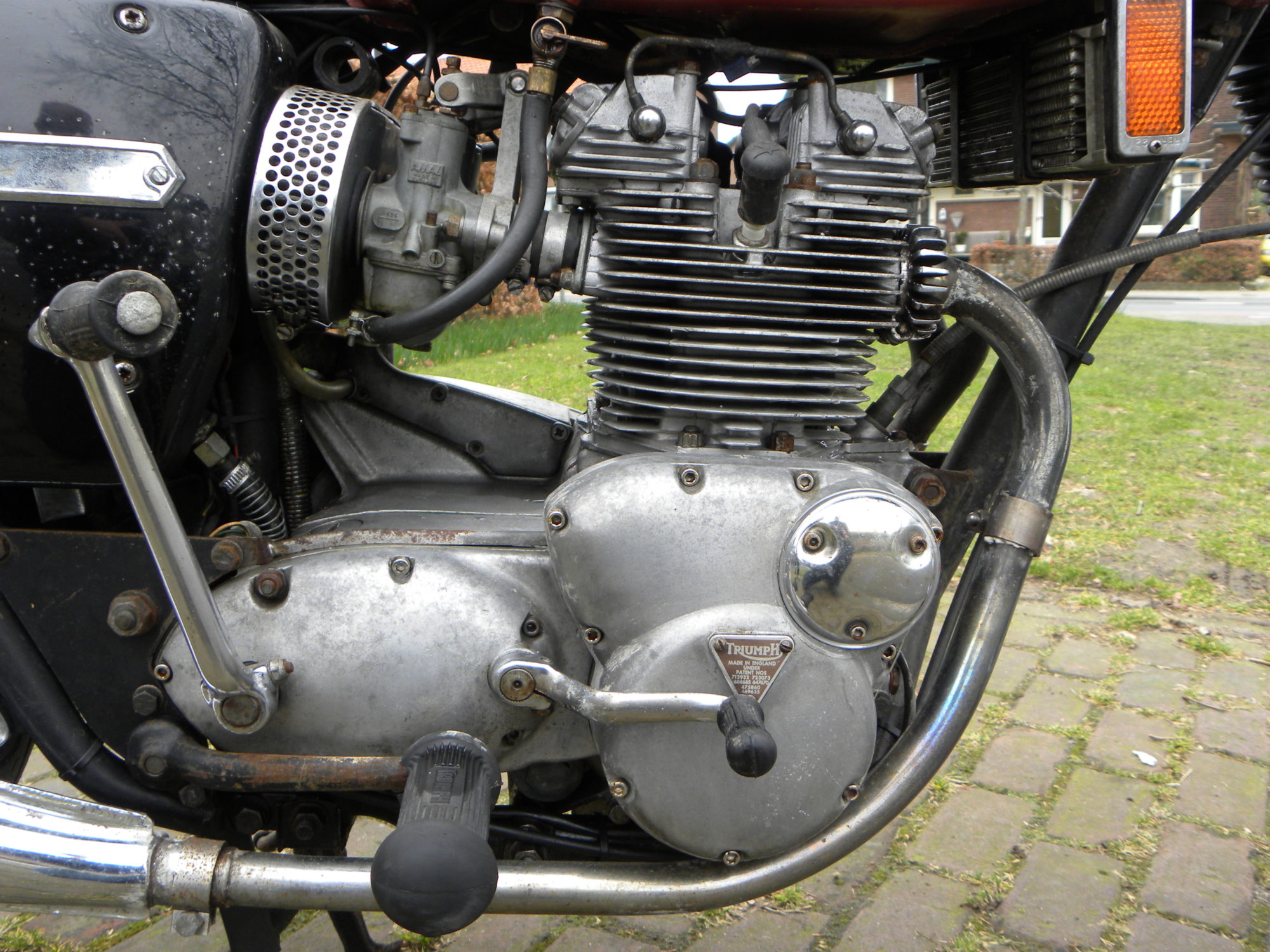After 25.000 km a head overhaul, including new valve guides and fresh pistons and piston rings? Well, around the mid-sixties to the early seventies, no one was surprised. Certainly Triumph Trident riders don't. But even a mechanical masterpiece like a BMW usually needed more than just fresh oil at about half a ton.
Less and rocking
Besides the fact that the quality of English motorcycles was often influenced by strikes and labor inconvenience and that for Italians quality was just not such a thing - as long as it was good enough, it was good enough - there were basic reasons that were very had a lot to do with the wear resistance and reliability of those machines. For example, between the sixties and the seventies, technology progressed by leaps and bounds. And motorcycling became more popular. There were no speed limits. That was the final blow to British motorcycles, a Trident spewing out a connecting rod. Check!
The Japanese set the tone
A Honda CB 750 who made so many revolutions on the center stand at a campsite in Renesse that the valves started to float? Double check. The Honda just did it again the next day. But with the early CB 750's, the secondary chain couldn't handle the power. And then broke. Crankcases do not like secondary chains. And so there was some tinkering.
Due to the quality of alloys, the knowledge of metallurgy and the much smaller tolerances, things have improved a lot since then. Just like another very important phenomenon: lubrication.
Oil is also such a thing
Because oil, formerly 'lubricating oil', has little to do with the stuff that comes out of the ground. Refining and manufacturing has improved immeasurably, and today's oil is a delicately balanced cocktail of added dopes that optimize lubricity and tool life. There are cleaning additives, additives that keep 'dirt' floating in the oil until it is caught by a highly effective oil filter, anti-foam additives ...
The Yamaha TX 750: better than its oil
The anti-foam additives, or at least the lack of them, were the actual death blow to the once cursed and now sought after Yamaha TX 750. And we're already talking about the first half of the 70s. Because with a modern synthetic oil even an unmodified TX runs. 750 without any problems and remains good.
It should be noted that a high-quality synthetic oil is not a panacea. But together with recent technology and adequate maintenance, we now have motorcycle engines that have proven three to five tons on the counter without ever having been 'open'.
It doesn't have to be that difficult
And then again you have an aside: because for real classics, such a syntheet is often just 'too good'. For those loyal veterans, the cheapest Action oil is fine, at least when it comes to a dry clutch engine. Ordinary car engine oil often slips clutch plates.
Retro as an option
In the current era, this explains the rise of retro bikes such as the Kawasaki W800 and the two-cylinder Royal Enfields. They offer recognizable motorcycles with the looks of the past and the quality of today. And if you don't go for the purest nostalgic considerations for 'the real thing', that's the best solution you could wish for.
Miracles and oil
There are many of them. And most are harmless. They don't do anything. In practice, only TSL and Yellow Miracle Oil prove to be effective dopes.
Also interesting to read:
- Panacea in the engine oil: PTFE and zinc
- Kick start or electric start. An electric leg and retro bikes. Is that allowed?
- Cees Fick YZ840 Special
- Mineral and synthetic engine oil?
- More about classic motorcycles












Nice article Dolf Peeters. And what a terribly beautiful Norton Commando 850 !!
The 850: the most beautiful after the freshman Fastback!
Carters that do not like secondary chains. Can it sometimes be about the primary chain? The chain from motor to gear box.
That Chain sometimes broke with the sevenfifty. A gaping hole in the crankcase was often the result. Expensive and quite a lot of tinkering 😰
No. It was the secondary chain. It broke. And wriggled around the front sprocket. What was not enough room for> crankcase broken